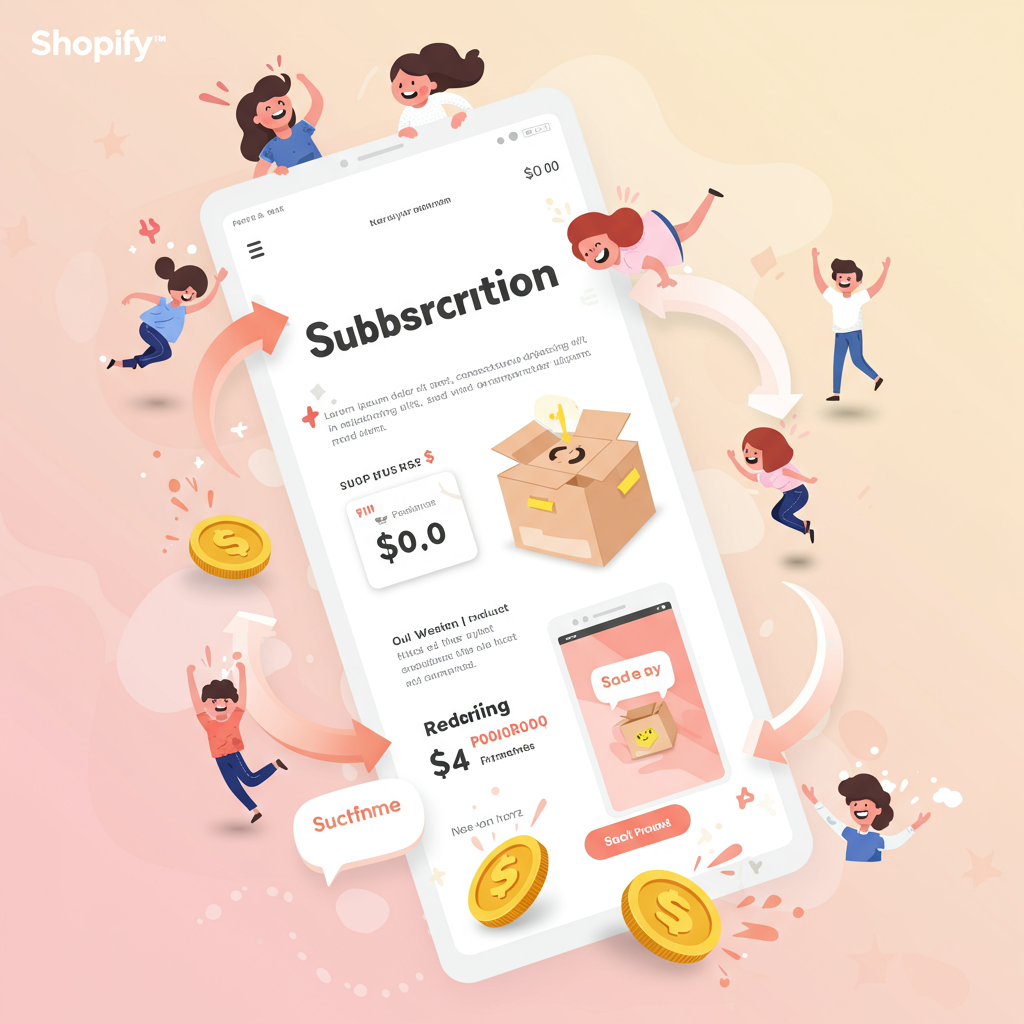Transforming Your E-commerce Business with Predictable Income Streams
Hello fellow entrepreneurs! Today, I want to talk about a game-changer for any e-commerce business: recurring revenue through subscriptions.
Imagine a steady stream of income flowing into your business month after month, year after year. That’s the power of subscriptions.
It’s not just about predictable revenue; it’s about building deeper relationships with your customers and fostering loyalty.
For Shopify merchants like us, integrating a subscription model might seem daunting at first, but I assure you, it’s incredibly achievable and rewarding.
In this guide, I’ll walk you through the entire process of setting up Shopify subscriptions, from initial considerations to optimizing for long-term success.
Why should you even consider subscriptions? Beyond the obvious financial stability, they significantly increase customer lifetime value (CLTV).
Customers who subscribe are often more engaged and less likely to churn than one-time purchasers, provided you deliver consistent value.
It also simplifies inventory management and forecasting, as you have a clearer picture of future demand.
Think about it: less effort spent acquiring new customers, more focus on delighting your existing ones.
Before diving in, ask yourself: Is my product or service suitable for a subscription model? Not everything fits.
Ideal candidates are consumables (coffee, supplements), curated boxes (beauty, snacks), access to exclusive content, or replenishment items (pet food, cleaning supplies).
Consider the value proposition. Why would someone want to receive this regularly? Is there a convenience factor, a cost saving, or an element of discovery?
Shopify doesn’t have native subscription functionality built-in, so you’ll need a third-party app. This is where the magic happens.
The Shopify App Store offers several robust options, such as ReCharge Subscriptions, Bold Subscriptions, Loop Subscriptions, and Appstle Subscriptions.
When evaluating apps, look for features like flexible billing frequencies, customer portal capabilities, dunning management (for failed payments), and seamless integration with your Shopify theme.
I recommend checking reviews, comparing pricing structures, and even trying out free trials to see which app best fits your specific needs and budget.
Once you’ve chosen an app, the setup process typically begins with installation from the Shopify App Store.
After installation, you’ll usually be guided through an onboarding wizard. This is where you’ll connect your payment gateway (Shopify Payments, Stripe, PayPal, etc.).
Next, you’ll configure your subscription products. This involves deciding which products will be available for subscription and setting their pricing.
You’ll define the subscription intervals – weekly, monthly, quarterly, annually – and whether you offer discounts for subscribing versus one-time purchases.
Many apps allow you to offer different subscription types, like “subscribe and save” or “prepaid subscriptions” for a set number of months.
A crucial aspect is the customer portal. This is where your subscribers can manage their own subscriptions – pause, skip, change address, update payment info, or cancel.
A user-friendly portal reduces customer service inquiries and empowers your customers, leading to higher satisfaction and retention.
Ensure your app provides robust dunning management. This system automatically attempts to recover failed payments, which is vital for reducing involuntary churn.
You’ll also want to set up automated email notifications for upcoming renewals, payment failures, and order confirmations.
Don’t just set it and forget it! Actively promote your subscription option. Make it prominent on your product pages, homepage, and in your marketing campaigns.
Highlight the benefits: convenience, savings, exclusivity. Use compelling visuals and clear calls to action.
Consider offering an introductory discount or a free gift for the first subscription order to entice new sign-ups.
Acquiring subscribers is one thing; keeping them is another. Focus on delivering consistent value and an excellent customer experience.
Regularly review your product offerings, perhaps introducing new items or variations to keep things fresh.
Engage with your community. Solicit feedback, run surveys, and make your subscribers feel like valued members of an exclusive club.
Implement loyalty programs or exclusive perks for long-term subscribers.
Most subscription apps provide detailed analytics. Track key metrics like churn rate, average subscription length, and customer lifetime value.
Use this data to identify trends, understand why customers are canceling, and optimize your offerings and marketing efforts.
A/B test different pricing models, subscription intervals, and promotional offers to see what resonates best with your audience.
Remember to be transparent about your subscription terms, cancellation policies, and billing cycles.
Clearly display all information on your product pages and in your terms of service to avoid customer disputes.
Ensure compliance with consumer protection laws regarding recurring billing.
Setting up Shopify subscriptions is a strategic move that can transform your business from transactional to relational.
It requires careful planning, the right tools, and a commitment to customer satisfaction, but the rewards are substantial.
I’ve personally seen the positive impact of recurring revenue, and I encourage you to explore this powerful model for your own Shopify store.
What do you think about this article? Did it provide the insights you were looking for?
Embrace the subscription economy, and watch your business thrive with predictable, sustainable growth.






